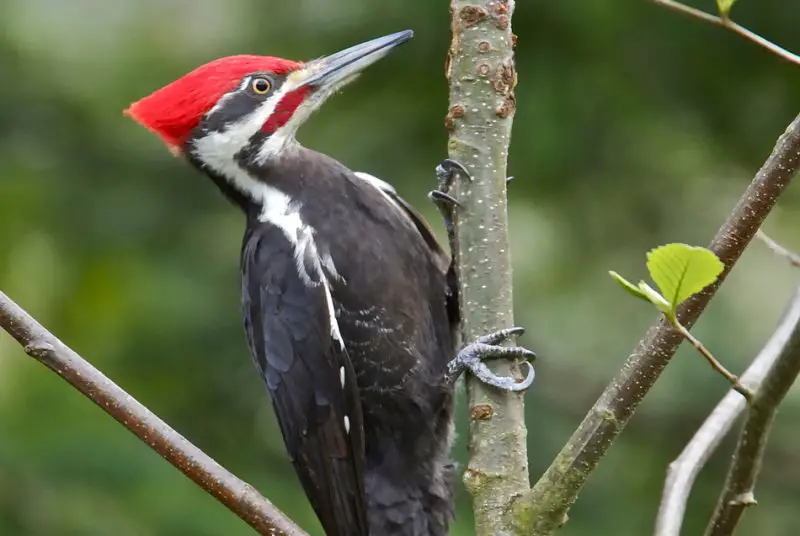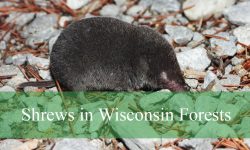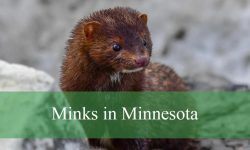The morning sun rises over a Texas oak woodland, spreading gold across the branches. The air is still, broken only by a sharp rat-tat-tat-tat echoing through the trees. Somewhere high above, a flash of black and gold flickers against the bark — a woodpecker, hammering out its presence with a rhythm older than the prairie winds.
Texas is home to more species of woodpeckers than almost any other state in the U.S. From pine forests in the east to desert canyons in the west, these birds thrive across a landscape as vast as their variety. Yet despite their visibility and their unmistakable calls, woodpeckers in Texas hold mysteries that even seasoned birdwatchers might not know.
This in-depth exploration reveals the surprising truth about Texas’s woodpeckers — their adaptations, intelligence, ecological roles, and the subtle ways they shape the state’s ecosystems.
The Woodpeckers of Texas

A State of Diversity
With its immense size and range of habitats, Texas supports at least 12 species of woodpeckers year-round or seasonally. Some are bright and bold, like the Golden-fronted Woodpecker that glows with orange and yellow hues, while others, like the Ladder-backed Woodpecker, blend into the arid canyons of the west.
Each species has carved its own niche in the Lone Star State. In eastern Texas, pine forests ring with the laughter-like calls of the Pileated Woodpecker. Along the Rio Grande, the Golden-fronted Woodpecker flashes orange in the sunlight. In hill country, Red-bellied Woodpeckers chatter among oak groves, while the Downy and Hairy Woodpeckers tap methodically through suburban parks.
Whether in desert scrub, grassland, or dense woodland, woodpeckers in Texas are everywhere — shaping the landscape one tree at a time.
Common Species in Texas
-
Golden-fronted Woodpecker (Melanerpes aurifrons) – The signature species of central and southern Texas, known for its golden nape and red cap.
-
Ladder-backed Woodpecker (Dryobates scalaris) – A desert dweller with zebra-like back stripes.
-
Pileated Woodpecker (Dryocopus pileatus) – The largest Texas species, often mistaken for a crow at a distance.
-
Red-bellied Woodpecker (Melanerpes carolinus) – Common in eastern woodlands and urban parks.
-
Downy and Hairy Woodpeckers – Small, energetic drummers found statewide.
-
Northern Flicker (Colaptes auratus) – A colorful ground-feeding woodpecker with bright yellow wing linings.
-
Red-headed Woodpecker (Melanerpes erythrocephalus) – Strikingly patterned, once common but now less widespread.
These species represent both the diversity and adaptability that define Texas woodpeckers — a testament to how life evolves to match the vast and varied terrain of this state.
Anatomy of a Natural Drummer
Built for Impact
The most remarkable thing about any woodpecker is not its color or call — it’s its ability to strike wood up to 20 times per second without injury. A human attempting the same would suffer a concussion in seconds.
A woodpecker’s skull is a masterpiece of biological engineering. Spongy bone absorbs shock, while the brain rests snugly against the skull’s back wall. A specialized hyoid bone wraps around the head and anchors the tongue, acting like a seatbelt that stabilizes the brain with every strike.
This system allows woodpeckers in Texas to hammer into mesquite, pine, or oak trees thousands of times a day — searching for insects, creating nest holes, or broadcasting territorial messages.
The Tongue Trick
A woodpecker’s tongue is its secret weapon. Often twice as long as its beak, it coils around the skull when not in use. The tip is barbed and sticky, coated with saliva to snag ants, beetles, and larvae deep inside bark crevices.
Different species have slightly different tongues adapted to their diets. For example, the Golden-fronted Woodpecker uses its tongue to probe fruit and sap as well as insects, while the Pileated Woodpecker drives its chisel-like beak into rotting logs to reach carpenter ants.
In the vast food web of Texas forests, this specialized anatomy keeps them perfectly equipped for survival.
Behavior and Daily Life
Drumming and Communication
Woodpeckers don’t sing like other birds. Instead, they drum. Each species has a distinct rhythm, used to declare territory, attract mates, or challenge rivals.
In early spring, Texas woodlands become a percussive symphony. The Red-bellied Woodpecker rattles on metal poles, the Downy drums rapidly on hollow branches, and the deep, rolling knocks of the Pileated Woodpecker echo through pine stands.
For these birds, drumming is language — a coded rhythm that travels farther than song ever could.
Social Interactions
While most species are solitary or form pairs, some, like the Golden-fronted Woodpecker, are surprisingly social. They may feed together or even cooperate to defend prime feeding areas.
These woodpeckers exhibit complex social behaviors — caching food in trees, remembering hundreds of storage sites, and returning days or weeks later.
This intelligence, combined with adaptability, has allowed woodpeckers in Texas to thrive even in developed landscapes, nesting in backyard trees or city parks.
Habitat and Range
From Pines to Deserts
Texas spans more than 268,000 square miles, encompassing forests, deserts, prairies, and mountains. Few birds navigate this diversity as successfully as the woodpecker.
In the Piney Woods of East Texas, towering loblolly and longleaf pines provide ample habitat for the Pileated and Red-bellied Woodpeckers. Moving westward, the Ladder-backed Woodpecker dominates desert scrub, where cactus and yucca replace trees.
The Golden-fronted Woodpecker, perhaps the state’s most iconic, thrives across central Texas, adapting to live oak, pecan, and mesquite woodlands — even suburban neighborhoods.
No matter the habitat, woodpeckers in Texas find opportunity wherever trees or vertical surfaces stand.
Nesting and Shelter
Every woodpecker is both architect and engineer. They carve cavities in dead or dying trees, chiseling with remarkable precision. These holes serve as nests, roosting spots, and even rain shelters.
Once abandoned, the cavities become homes for other wildlife — owls, bluebirds, flying squirrels, and bats. This makes woodpeckers in Texas vital “ecosystem engineers,” creating shelter for many species that can’t build their own.
Each spring, males and females work together to excavate a new cavity, reinforcing pair bonds and renewing the ancient cycle of forest life.
Diet and Foraging
Insect Experts
Woodpeckers are nature’s pest control. Their diet consists mainly of beetle larvae, ants, termites, and caterpillars — the insects that damage trees.
The Pileated Woodpecker, in particular, specializes in carpenter ants and wood-boring beetles, tearing apart decaying logs with powerful strikes. Meanwhile, smaller species like the Downy Woodpecker patrol branches for bark beetles and aphids.
This constant foraging keeps Texas forests healthy, reducing infestations that could otherwise spread through woodlands.
A Taste for Variety
Though most feed on insects, woodpeckers in Texas are surprisingly omnivorous. Many also eat berries, nuts, and fruits. The Golden-fronted Woodpecker enjoys prickly pear cactus fruits and hackberries, while the Red-headed Woodpecker is known to catch flying insects midair and even store acorns in tree bark.
Such adaptability allows these birds to thrive in both natural and urban environments, turning every season into a feast.
Reproduction and Family Life
Courtship and Nesting Rituals
Spring in Texas brings more than wildflowers and warmer air — it’s also woodpecker courtship season. Pairs call, drum, and chase each other through the trees in elaborate displays.
Once paired, they excavate a nest cavity, which can take one to three weeks to complete. Inside, the female lays 3–6 glossy white eggs. Both parents take turns incubating, a sign of cooperation rare in many bird species.
After hatching, the chicks grow rapidly, nourished by a steady stream of insects. Within a month, they’re ready to fledge — but often remain near the parents for several weeks to learn foraging skills.
Each year, new generations of woodpeckers in Texas take to the trees, continuing a lineage that has endured for millions of years.
Woodpeckers and Texas Ecosystems
The Tree Builders of the Forest
Few animals influence their surroundings as profoundly as woodpeckers. Their nesting holes become vital shelters for secondary cavity dwellers — animals that cannot dig their own homes.
In Texas forests, these abandoned holes are used by Eastern Screech Owls, Chickadees, and even Tree Frogs. The process enriches biodiversity, turning trees into vertical neighborhoods teeming with life.
Without woodpeckers in Texas, entire chains of forest species would lose critical shelter and breeding sites.
Controlling Insect Populations
By feeding on wood-boring insects, woodpeckers act as natural foresters. Their constant tapping prevents tree decay and helps control pest outbreaks.
This ecological service is invaluable — especially in pine and oak woodlands where invasive beetles threaten entire stands.
In this way, woodpeckers aren’t merely residents of the forest; they are caretakers of its health.
Unique Adaptations and Behaviors
Pecking Without Pain
A woodpecker’s impact force is equivalent to slamming its head into a wall at 15 miles per hour — over 10,000 times a day. Yet it never suffers brain damage.
Their secret lies in anatomy: reinforced skull bones, minimal cerebrospinal fluid, and a specialized shock-absorbing structure between the beak and skull. Even the direction of their pecking — straight and centered — minimizes rotational forces.
These adaptations make woodpeckers in Texas living marvels of biomechanics, masters of precision and endurance.
The Drummer’s Legacy
Each woodpecker species leaves a signature on its environment — the holes, the calls, the rhythm of its hammering. In a sense, the soundscape of Texas forests and deserts is partly written by woodpeckers themselves.
Long after a bird moves on, its excavations endure — serving as nests, echo chambers, and entryways for new life. In every way, they shape not only the landscape but also the pulse of nature itself.
Conservation and Human Interaction
Threats to Texas Woodpeckers
Despite their adaptability, some woodpeckers in Texas face challenges. Habitat loss, pesticide use, and urban sprawl threaten nesting sites and food sources.
Species like the Red-headed Woodpecker have declined significantly due to deforestation and reduced availability of standing dead trees. Even the Golden-fronted Woodpecker, though common, suffers from tree removal in suburban areas.
Protecting old trees, conserving woodland corridors, and reducing chemical use are vital steps toward maintaining Texas’s rich avian diversity.
Coexisting With Woodpeckers
While their drumming can sometimes annoy homeowners, especially when they target metal gutters or siding, it’s usually a sign of territorial communication, not destruction.
Simple deterrents — reflective strips, wind chimes, or netting — can discourage unwanted drumming without harming the birds.
Encouraging coexistence allows both people and woodpeckers in Texas to share the same space, maintaining the harmony of the state’s natural rhythms.
Surprising and Little-Known Facts About Woodpeckers in Texas
-
The Pileated Woodpecker can carve holes large enough for small owls to use later.
-
Golden-fronted Woodpeckers sometimes use telephone poles as nesting sites.
-
The Ladder-backed Woodpecker can survive desert heat exceeding 100°F by reducing activity midday.
-
Red-headed Woodpeckers store food for winter by wedging insects into tree bark.
-
A woodpecker’s tongue can extend three times the length of its bill.
-
They can drum up to 20 times per second.
-
Downy Woodpeckers often join mixed winter flocks with chickadees for safety.
-
The Northern Flicker prefers to forage on the ground for ants — a rare trait among woodpeckers.
-
Their pecking force equals 1,000 times the force of gravity, yet causes no injury.
-
The oldest known Golden-fronted Woodpecker lived over 9 years in the wild.
FAQs About Woodpeckers in Texas
How many woodpecker species live in Texas?
At least 12 species, including Golden-fronted, Pileated, Ladder-backed, and Red-headed Woodpeckers.
Where can I see woodpeckers in Texas?
Look in pine forests, oak woodlands, riparian areas, and parks like Big Bend, Bastrop State Park, and Sam Houston National Forest.
Do woodpeckers damage trees?
No. They mostly target dead or infested wood, helping trees stay healthy by removing pests.
Are woodpeckers protected?
Yes. All native species are protected under the Migratory Bird Treaty Act.
What do woodpeckers eat?
Insects, larvae, ants, beetles, fruits, and nuts — depending on the season and species.
Why do woodpeckers peck on metal?
The sound carries farther, helping them establish territory during breeding season.
Do any Texas woodpeckers migrate?
Some species, like Yellow-bellied Sapsuckers, visit in winter but breed farther north.
Are woodpeckers beneficial?
Absolutely. They control insects, promote forest health, and create nesting sites for other animals.
Can woodpeckers live in urban areas?
Yes. Many adapt well to parks, gardens, and wooded suburbs.
How can I attract woodpeckers to my yard?
Provide suet feeders, dead trees for nesting, and native fruit-bearing plants.
Final Thoughts
The woodpeckers of Texas are far more than forest drummers — they are living architects, pest controllers, and storytellers of the land. Every peck, call, and nest hole they make contributes to the balance of the ecosystems they inhabit.
From the deserts of the Rio Grande to the pine forests of the east, their persistence is a symbol of Texas itself — resilient, adaptive, and wild. They shape woodlands unseen, guiding renewal through rhythm and instinct.
The truth about woodpeckers in Texas is simple yet profound: they are nature’s percussionists, striking life back into the landscape one heartbeat, one tree, and one echo at a time.






